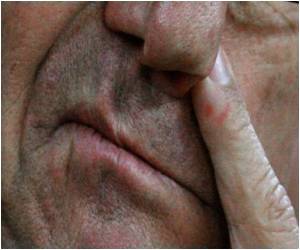Reaction of the brains of children with gender dysphoria to androstadienone, a musky-smelling steroid produced by men, changes after puberty in line with their experienced gender.

Previous studies have shown that, in heterosexual women, the brain region that responds most to androstadienone is the hypothalamus, which lies just above the brainstem and links the nervous system to the hormonal system. In men with gender dysphoria (formerly called gender identity disorder) – who are born as males, but behave as and identify with women, and want to change sex – the hypothalamus also reacts strongly to its odor. In contrast, the hypothalamus of heterosexual men hardly responds to it.
Girls without gender dysphoria before puberty already show a stronger reaction in the hypothalamus to androstadienone than boys, finds a new study by Sarah Burke and colleagues from the VU University Medical Center of Amsterdam, the Netherlands, and the University of Liège, Belgium.
The researchers used neuroimaging to also show for the first time that in prepubescent children with gender dysphoria, the hypothalamus reacts to the smell of androstadienone in a way typical of their biological sex. Around puberty, its response shifts, and becomes typical of their experienced gender.
The reaction to the smell of androstadienone in the hypothalamus of 154 children and adolescents, including girls and boys, both before (7 to 11-year-old) and after puberty (15 to 16-year-old), of whom 74 had been diagnosed with gender dysphoria.
Results showed that the hypothalamus was more responsive to androstadienone in 7 to 11-year-old girls than in boys, both without gender dysphoria, although not yet as much as in adolescent girls. This means that the greater receptiveness of women to its odor already exists before puberty, either as an inborn difference or one that arises during early childhood.
Advertisement
These results suggest that as children with gender dysphoria grow up, their brain naturally undergoes a partial rewiring, to become more similar to the brain of the opposite sex – so corresponding to their experienced gender.
Advertisement













